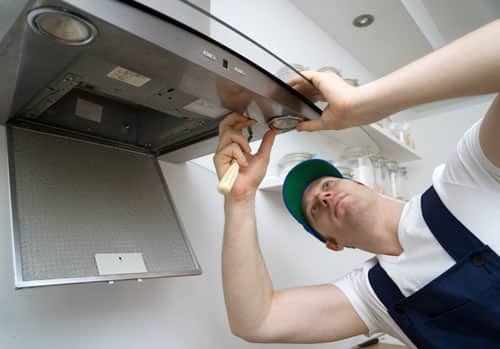Benefits and Use Cases of Service Automation-Enabled Asset Management for Retail & Restaurants

This is the second in a series of posts highlighting the importance of modern asset management for multi-location enterprises and how to take advantage of advancements like the latest in asset tagging technologies.
In our previous blog post of this series, we provided an overview of how integrating asset tagging and management as part of a service automation workflow benefits users (facilities management teams in particular) with easy access to details of all physical assets, including work history and maintenance, warranty and preventive maintenance information across every location under management.
ServiceChannel is practically unique in offering this integrated capability, which paves the way for companies to unify asset and service management under a common platform and standardized processes. Companies who choose to unify asset and service management in this way gain distinct advantages including:
- Preventing repeat and/or unnecessary asset service by reviewing an asset’s service history
- Eliminating duplicate payments, which keeps costs in check
- Making data-driven repair-or-replace decisions for key assets by tightly correlating R&M costs to each specific asset via asset scans
- Having full visibility into what assets are under warranty (or not), a key step in limiting warranty leakage. ServiceChannel research shows that most companies lose up to 34% potential warranty savings from leakage and unnecessarily paying for repairs
Retail Superstore Asset Management Use Case
While these benefits can be shared universally across all industries, each vertical industry is likely to have specific use cases of this integrated solution. An obvious one is retail, with one-stop-shop superstores, whose business is to stock and track thousands of goods and perishable items that go in and out of their shelves, refrigerators, freezers, food kiosks, etc. on a daily basis.
Keeping these assets operating and in proper shape is mission-critical for these retailers, which makes it a prime responsibility for their facilities managers. Integrating asset management into service automation provides these FMs with unprecedented levels of visibility and control into their assets.
With a higher degree of visibility and control of their assets using asset tagging, FMs will have the ability to accurately report against their assets at a higher level of detail. For example, instead of simply reporting on repair & maintenance (R&M) work orders at merely the asset type level, they now may go even more granular to the brand and model levels, with a high level of accuracy.
This can further inform repair or replace decisions based on external data available through the asset manufacturer or third-party documentation (user reviews, peer recommendations, etc.)
Asset tagging functionality allows the FM team to tag, update and track this inventory of assets more easily and efficiently as they would with all other aspects of its service automation-based facilities R&M operations.
This is especially useful as assets are moved between locations on a temporary or permanent basis. Visibility and control of the asset inventory are also beneficial for planned asset maintenance programs and for adhering to compliance matters such as required inspections or warranty tracking.
Restaurant Asset Management Use Case
 For restaurants, making sure a key asset is operational can be the difference between a location being able to keep its doors open or not, as noted by the director of Facilities Management at Bloomin’ Brands whose department is responsible for more than 1,500 locations globally. So, when an asset such as a stove or freezer is on the fritz, the restaurant is well-advised to initiate a repair work order and get a qualified technician on-site as soon as possible.
For restaurants, making sure a key asset is operational can be the difference between a location being able to keep its doors open or not, as noted by the director of Facilities Management at Bloomin’ Brands whose department is responsible for more than 1,500 locations globally. So, when an asset such as a stove or freezer is on the fritz, the restaurant is well-advised to initiate a repair work order and get a qualified technician on-site as soon as possible.
Integrating asset tagging and management with service automation streamlines this process even further. Restaurants would first tag all of their critical (production) assets at all locations. When an asset(s) require service, the restaurant manager or any other qualified employee can simply scan the asset tag to trigger the service automation platform to create a work order on the spot, at the click of a button.
This service request would then become another entry into the asset’s overall service history and the on-going FM operations data to be converted into actionable insights.
Managing Your Assets Effectively – Seeing Is Believing
To get a better understanding of how the latest in asset tagging, tracking and management can drive these benefits for your own organization, watch a demo or reach out to us directly.
In further blog posts in this series, we’ll take a deeper dive into the challenges of asset management today, best practices, and “repair or replace” decisions and the specific role prescriptive analytics might play in that process.
Learn more about the benefits of integrating asset tagging and management as a part of your service automation workflow.
